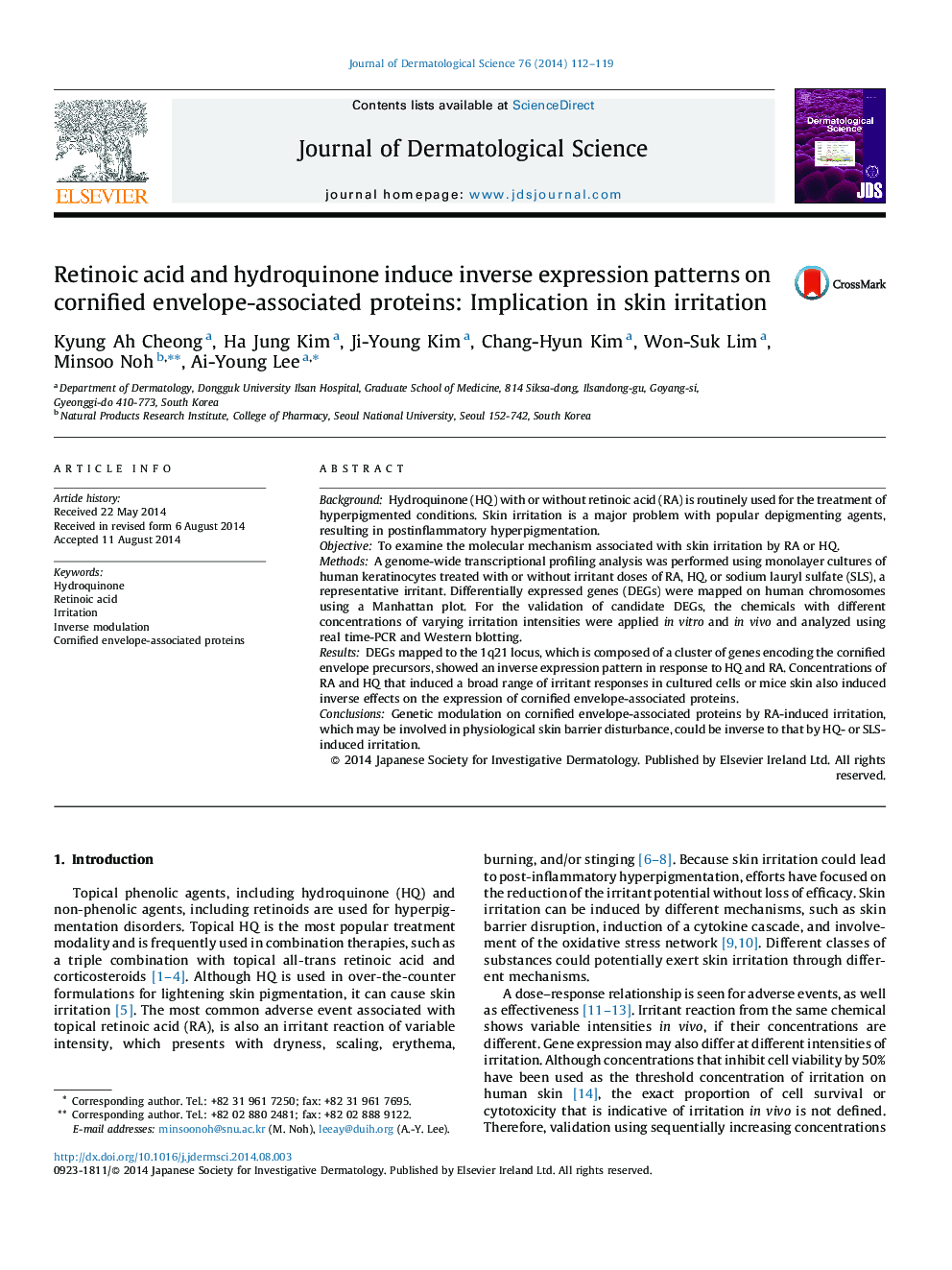| Article ID | Journal | Published Year | Pages | File Type |
|---|---|---|---|---|
| 3212712 | Journal of Dermatological Science | 2014 | 8 Pages |
•DEGs on 1q21 locus showed an opposite expression pattern in response to RA and HQ.•RA-induced irritation reduced expression of cornified envelope-associated proteins.•HQ-induced irritation increased expression of cornified envelope-associated proteins.•The opposite expression in response to RA and HQ developed in vitro and in vivo.•The opposite expression developed in concentrations of varying irritation intensities.
BackgroundHydroquinone (HQ) with or without retinoic acid (RA) is routinely used for the treatment of hyperpigmented conditions. Skin irritation is a major problem with popular depigmenting agents, resulting in postinflammatory hyperpigmentation.ObjectiveTo examine the molecular mechanism associated with skin irritation by RA or HQ.MethodsA genome-wide transcriptional profiling analysis was performed using monolayer cultures of human keratinocytes treated with or without irritant doses of RA, HQ, or sodium lauryl sulfate (SLS), a representative irritant. Differentially expressed genes (DEGs) were mapped on human chromosomes using a Manhattan plot. For the validation of candidate DEGs, the chemicals with different concentrations of varying irritation intensities were applied in vitro and in vivo and analyzed using real time-PCR and Western blotting.ResultsDEGs mapped to the 1q21 locus, which is composed of a cluster of genes encoding the cornified envelope precursors, showed an inverse expression pattern in response to HQ and RA. Concentrations of RA and HQ that induced a broad range of irritant responses in cultured cells or mice skin also induced inverse effects on the expression of cornified envelope-associated proteins.ConclusionsGenetic modulation on cornified envelope-associated proteins by RA-induced irritation, which may be involved in physiological skin barrier disturbance, could be inverse to that by HQ- or SLS-induced irritation.
